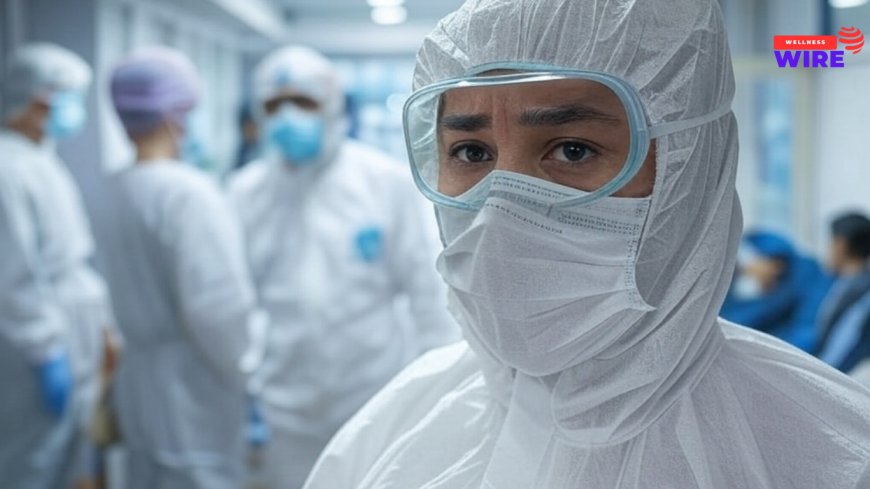The Next Pandemic? How Antibiotic-Resistant Superbugs Threaten Global Health
Antibiotic-resistant superbugs are a growing global threat. Learn how misuse, overprescription, and lack of new drugs could lead to the next pandemic.

Introduction
While the world is still recovering from the COVID-19 pandemic, another looming health crisis is silently spreading—antibiotic-resistant superbugs. These deadly pathogens are evolving faster than modern medicine can combat them, rendering once-effective antibiotics useless.
The World Health Organization (WHO) has declared antibiotic resistance one of the top 10 global public health threats. Without urgent intervention, we could face a future where common infections become untreatable, routine surgeries become high-risk, and minor injuries could turn fatal.
In this article, we’ll explore how antibiotic resistance is escalating, the dangers it poses, and what can be done to prevent it from becoming the next pandemic.
What Are Antibiotic-Resistant Superbugs?
Antibiotic-resistant superbugs are bacteria that have evolved to withstand the effects of antibiotics, making infections difficult—or even impossible—to treat. These bacteria develop resistance through genetic mutations or by acquiring resistance genes from other bacteria.
Common superbugs include:
- Methicillin-resistant Staphylococcus aureus (MRSA) – Causes skin infections, pneumonia, and bloodstream infections.
- Carbapenem-resistant Enterobacteriaceae (CRE) – A deadly group of bacteria resistant to nearly all antibiotics.
- Drug-resistant tuberculosis (TB) – A growing global health crisis, particularly in developing countries.
- Clostridioides difficile (C. diff) – Causes severe diarrhea and life-threatening intestinal infections.
According to a 2022 study published in The Lancet, antibiotic-resistant infections killed over 1.27 million people worldwide in 2019—more than HIV/AIDS or malaria.
How Did We Get Here? The Causes of Antibiotic Resistance
1. Overuse and Misuse of Antibiotics
Antibiotics have been overprescribed for decades, often for viral infections like the flu, where they are ineffective. In many countries, antibiotics are available over the counter, leading to self-medication and widespread misuse.
A report from the Centers for Disease Control and Prevention (CDC) states that at least 30% of antibiotic prescriptions in the U.S. are unnecessary.
2. Overuse in Agriculture and Livestock
The livestock industry is a major contributor to antibiotic resistance. Farmers routinely give antibiotics to healthy animals to promote growth and prevent disease, leading to antibiotic-resistant bacteria in meat, dairy, and even soil.
A study by the Food and Agriculture Organization (FAO) found that over 70% of antibiotics sold worldwide are used in animals, not humans.
3. Poor Infection Control in Healthcare Settings
Hospitals and clinics are breeding grounds for antibiotic-resistant infections due to:
- Poor sanitation and hygiene
- Inadequate infection control measures
- Overuse of broad-spectrum antibiotics
According to Johns Hopkins Medicine, one in 31 hospitalized patients in the U.S. acquires a healthcare-associated infection (HAI), many of which are resistant to treatment.
4. Lack of New Antibiotics
The development of new antibiotics has stalled in recent decades. Pharmaceutical companies have little financial incentive to invest in antibiotics, as they are less profitable than drugs for chronic conditions.
The Pew Charitable Trusts reports that only a handful of new antibiotics have been approved in the last decade, and most are modifications of existing drugs rather than entirely new treatments.
The Global Impact: Why Superbugs Could Be the Next Pandemic
The spread of antibiotic-resistant infections is not a distant threat—it’s already happening. If left unchecked, we could face:
- Higher mortality rates – Simple infections could become untreatable, leading to millions of deaths annually.
- Increased healthcare costs – Treating drug-resistant infections is far more expensive than treating standard infections.
- Failed surgeries and medical procedures – Organ transplants, chemotherapy, and C-sections all rely on effective antibiotics to prevent infections.
- A global economic crisis – The World Bank estimates that antibiotic resistance could cause a $100 trillion economic loss by 2050 due to increased healthcare costs and reduced productivity.
Can We Stop Antibiotic Resistance? Solutions and Future Strategies
While antibiotic resistance cannot be entirely eliminated, it can be slowed through a combination of policy changes, technological advancements, and public awareness.
1. Stricter Regulations on Antibiotic Use
Governments must ban over-the-counter antibiotic sales, restrict unnecessary prescriptions, and regulate antibiotic use in agriculture.
The European Union (EU) has already taken steps by banning antibiotic growth promoters in livestock—a policy that should be adopted worldwide.
2. Development of New Antibiotics and Alternatives
We need urgent investment in:
- New antibiotic classes
- Bacteriophage therapy (viruses that kill bacteria)
- CRISPR-based gene editing to disable resistant bacteria
The Global Antibiotic Research and Development Partnership (GARDP) is funding new research, but governments and pharmaceutical companies must also step up.
3. Improved Infection Prevention and Control
Hospitals must:
- Enforce strict hygiene protocols
- Promote better handwashing practices
- Reduce the use of broad-spectrum antibiotics
According to the World Health Organization (WHO), simple measures like hand hygiene can reduce the spread of antibiotic-resistant infections by up to 50%.
4. Public Education and Awareness
Many people still believe antibiotics cure viral infections like the flu. Governments and health organizations must launch awareness campaigns to educate the public about the dangers of antibiotic misuse.
Programs like the CDC’s "Get Smart About Antibiotics" campaign have helped, but more needs to be done globally.
5. Strengthening Global Surveillance
Stronger international cooperation is needed to track the spread of resistant bacteria. The Global Antimicrobial Resistance and Use Surveillance System (GLASS), led by the WHO, is helping monitor resistance trends worldwide.
Conclusion: A Race Against Time
Antibiotic resistance is not a future problem—it is happening now. If we do not take immediate action, the world could soon face a post-antibiotic era where minor infections become deadly, routine surgeries become life-threatening, and modern medicine is thrown back into the pre-antibiotic age.
The solution lies in policy changes, scientific innovation, and responsible antibiotic use. Governments, healthcare providers, researchers, and the public must work together to prevent antibiotic-resistant superbugs from triggering the next global health crisis.
The world cannot afford to ignore this growing threat. The time to act is now.
What's Your Reaction?
 Like
0
Like
0
 Dislike
0
Dislike
0
 Love
0
Love
0
 Funny
0
Funny
0
 Angry
0
Angry
0
 Sad
0
Sad
0
 Wow
0
Wow
0



















































